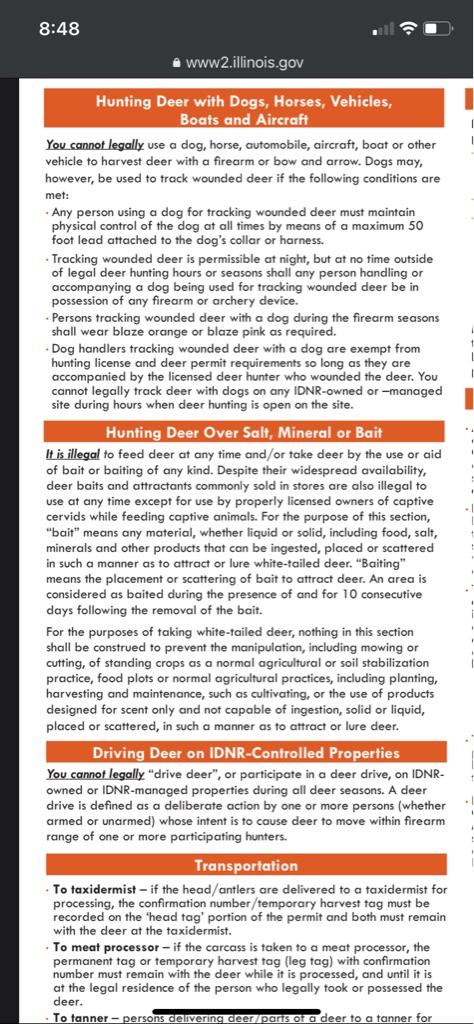It’s extremely advantageous where I hunt and legal and everyone does. I’m like a unicorn where I hunt. My neighbor shot a 170 and his girlfriend a 161 last year over giant piles of corn cobs. Mature deer absolutely come to corn during daylight. People who say otherwise use it as a way to make it sound like it’s not that much of advantage.
How deer react to a food source, regardless if it is a pile of bait or native food, can vary significantly. The algorithm behind all life is to pass as much genetic material as far into the future as possible. In order to do that, you need to first survive, then be healthy, and have sex. Then you offspring have to survive to sexual maturity. This is not planned or conscious thought, it is engrained in DNA. As the individual interacts with the environment it responds to sensory inputs.
The algorithm running in a deer's brain is constantly battling between nutrition and security, and hormonally driven sex can override them both during brief periods. In places were native foods are scarce and climate is harsh, deer may take big risks to get quality food. When their survival and health are not at risk, security wins the day every time. There are behavioral difference between male and female and young and more mature bucks. In general, older bucks lean more toward security than younger bucks or does. If they did not, they would not made it far enough to be older. Generally, does take more risks than bucks. This is because female deer have different strategies for passing genetics than male deer. Bucks use the strategy of having sex with as many does as possible consistent with their health and safety. Once a buck services a doe, his cost for that potential offspring is zero. An impregnated doe has a high cost. She has to get enough nutrition for two for the gestation period and for the nursing period. The number of fawns she can have in a lifetime is small compared to the number of does a buck can service in his lifetime, so a lower percentage of a the fawns a buck fathered need to survive to breed. So, a doe is hamstrung by the nutritional needs of her fawns as they learn to survive from her.
So, in the end, a bait pile is a crutch. It is advantage over hunting any native high quality food source when food is scarce. When quality food is plentiful, it may even be a disadvantage in that deer eventually figure out it is higher risk if they have lower risk alternatives. When I say crutch, I mean a short-cut. Instead of putting in the work of planting a food source or improving habitat or simply scouting to find native food sources and pinch points, one can simply dump out a plie of corn near their stand.
Certainly under some circumstance, bait can be effective, but no more effective than good scouting for quality foods (provided any are available).
 .
..

